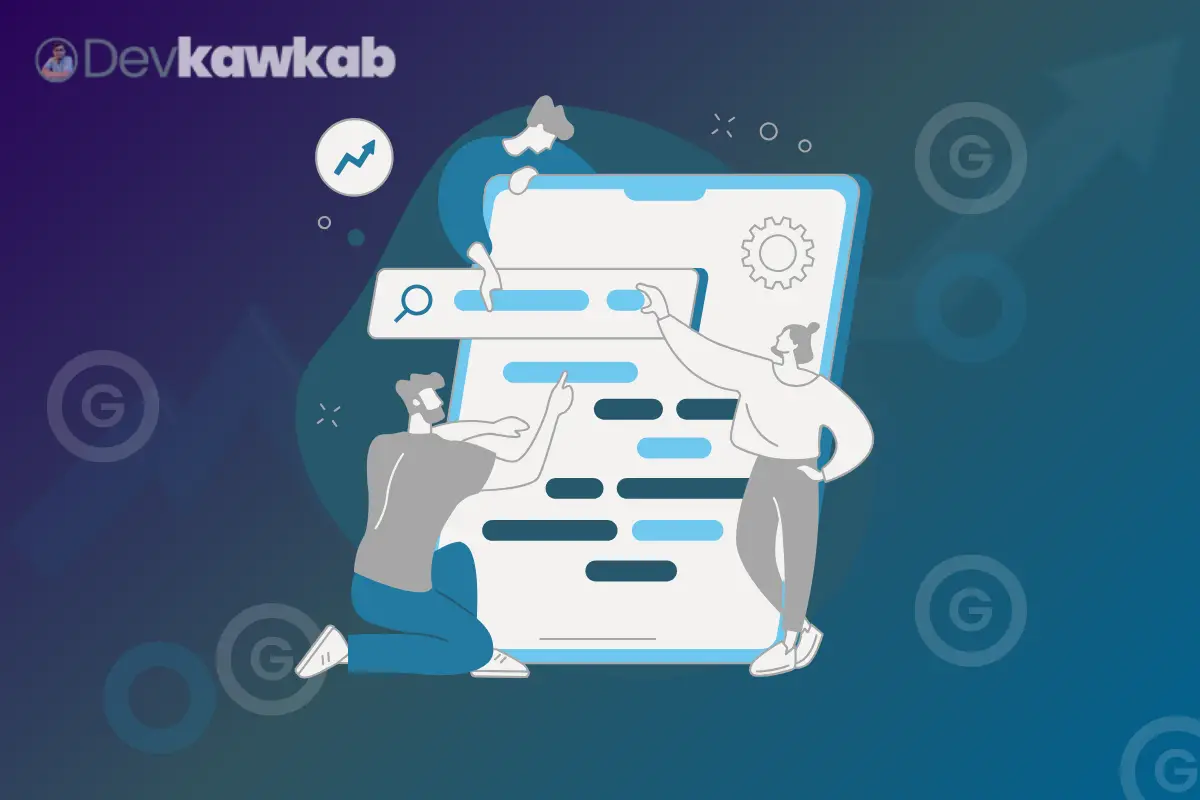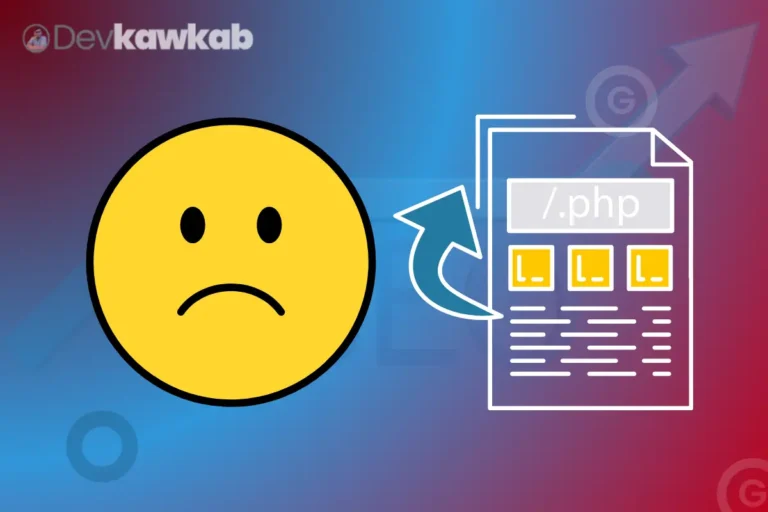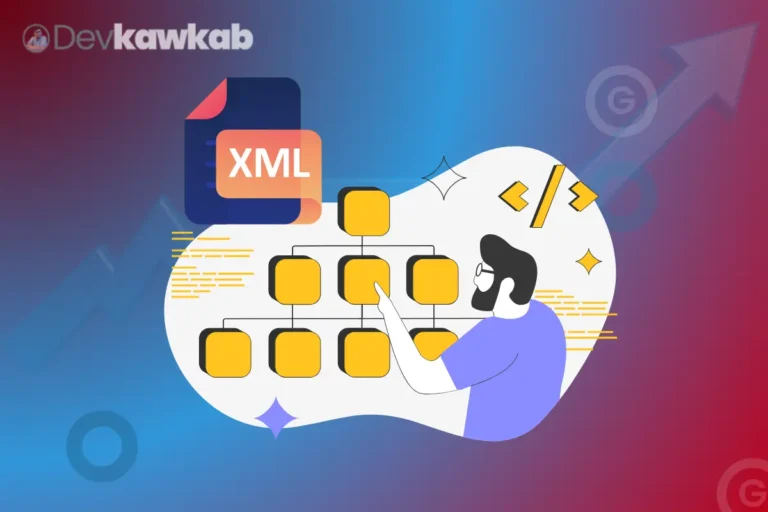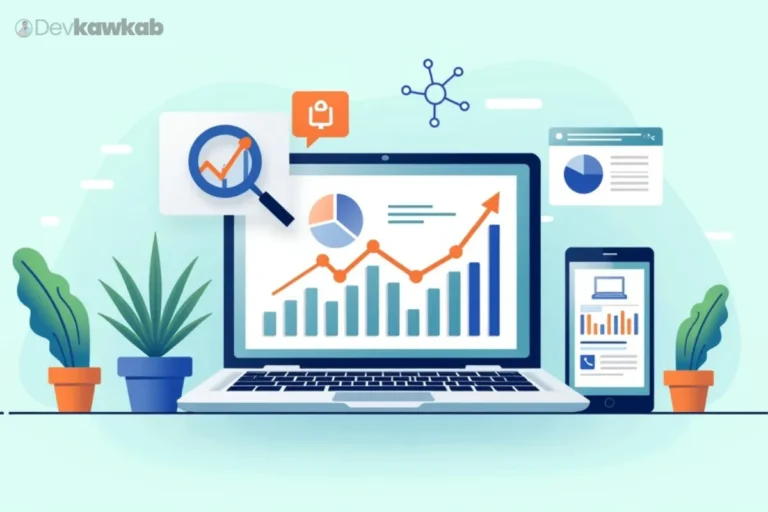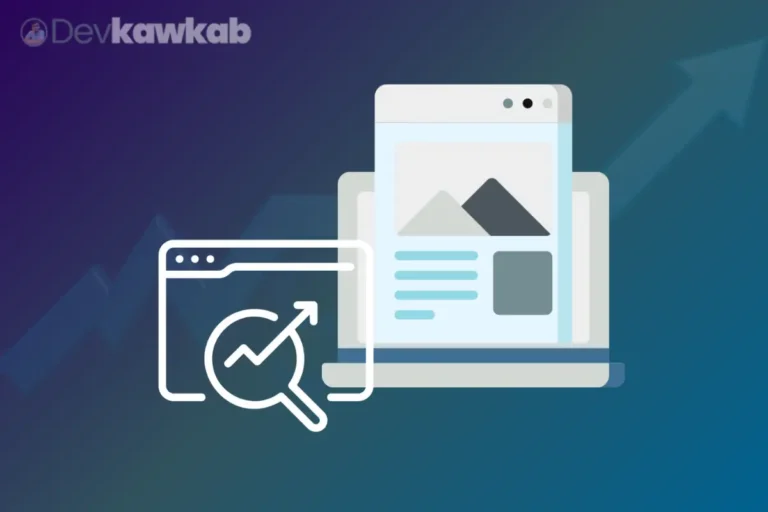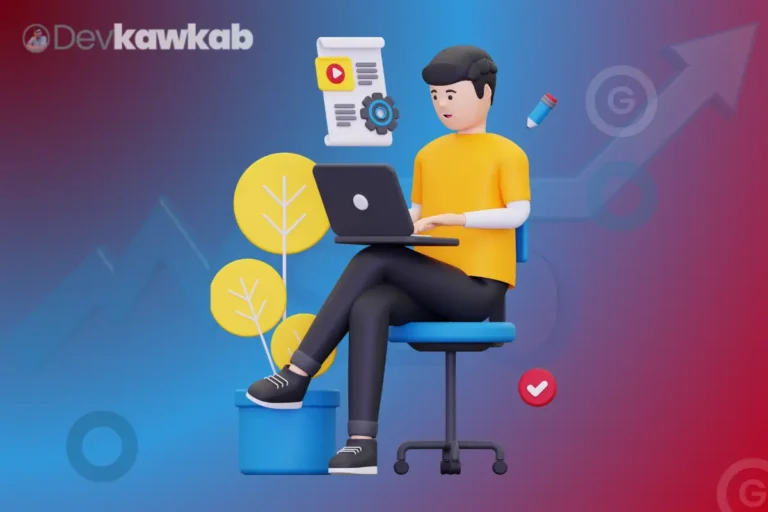Want to rank higher on search engines? On-page SEO is your answer. It’s all about optimizing your content to make it more visible and valuable to both users and search engines. This involves smart keyword use, better user engagement, and strategic content updates.
Effective on-page SEO rule on techniques like structured content, internal linking, and meta tag optimization. Together, these strategies improve rankings and keep your content fresh and relevant over time. It’s not just about getting traffic but engaging users too.
This is your complete guide to optimizing content for on-page SEO in 2025.
In this guide, you’ll uncover how to:
- Improve rankings with well-structured content
- Use keyword placement to drive organic traffic
- Optimize meta tags for better visibility
- Boost user engagement through content optimization
- Build a strong internal linking structure
- Keep your content fresh with regular updates
Each section dives into the essential techniques you need for on-page SEO success. Ready to boost your content’s performance? Let’s jump right in!
Read More – Why On-Page SEO Affects User Experience?
How Does Optimizing Content for On-Page SEO Improve Search Engine Rankings?
Optimizing your content for on-page SEO has a direct influence on how search engines rank your site.
Search engines like Google use various signals to determine relevance, and optimized content ensures those signals are clear and authoritative.
To rank higher, your content must match user intent. When your content is optimized with target keywords, meta tags, and relevant internal links, search engines can easily understand the page’s value, leading to higher rankings.
The Role of Keywords in Ranking
A key part of on-page SEO is effective keyword optimization.
Using relevant keywords strategically within your content, headings, and meta descriptions allows search engines to associate your page with specific search queries.
Avoid keyword stuffing, though. Instead, use natural language that flows smoothly while still targeting the right terms.
Primary vs. Secondary Keywords: Incorporating both primary and secondary keywords can broaden your content’s reach. Primary keywords should be the main focus, appearing naturally in headings and throughout the article. Meanwhile, secondary keywords can support the content, adding context without overwhelming the main message.
User Experience and SEO Rankings
Search engines prioritize user-friendly content. When you optimize for on-page SEO, you’re also enhancing the user experience.
Well-organized content with appropriate headers, bullet points, and readable paragraphs improves user engagement metrics like bounce rate and time on page.
These are key signals to Google that your page provides value, which can help in rankings.
Mobile Optimization for Better Ranking
Google’s mobile-first indexing has made mobile optimization an essential part of on-page SEO.
Content that’s easily readable on mobile devices increases engagement, improving ranking signals.
Ensuring your images, text, and page speed are optimized for mobile not only improves user experience but also boosts your search engine rankings.
Content Freshness Matters
Google prefers up-to-date content. Regularly updating your content with the latest information shows search engines that your page is relevant and authoritative.
This content freshness can result in better rankings, especially in industries where new information surfaces often.
The Influence of Meta Tags
Meta tags, including title tags and meta descriptions, also affect ranking.
These small snippets of HTML code provide search engines with a quick summary of your page.
An optimized meta tag with a clear keyword focus helps search engines rank your page more accurately.
Optimized Images and Alt Text
Images play a significant role in SEO. Using optimized images with descriptive alt text raises accessibility and helps search engines understand your content’s visual elements.
Alt text should describe the image and include relevant keywords where appropriate.
Structured Data and Ranking Boosts
Adding structured data (schema markup) to your content can give it a ranking boost.
Structured data helps search engines understand your content better and might result in rich snippets on the search results page, which can improve click-through rates.
Read More – Why On-Page SEO Impacts Conversion Rates?
What Role Does Keyword Placement Play in On-Page SEO?
Keyword placement is a crucial part of on-page SEO. Where and how you use your keywords can significantly impact your rankings.
Properly placed keywords guide search engines to understand the topic and relevance of your content, boosting its visibility in search results.
Keyword placement isn’t just about using your target words frequently-it’s about strategically positioning them for maximum impact without disrupting the flow of the content.
The Significance of Title Tags
Your title tag is one of the most important places to include your primary keyword. Search engines rely heavily on title tags to understand the context of your page.
A well-optimized title tag, containing the primary keyword close to the beginning, can lead to better rankings.
Optimal Length and Placement: Title tags should ideally be 50-60 characters long and the primary keyword should be positioned as close to the start as possible for maximum effect. Avoid stuffing too many keywords here; focus on making it compelling and relevant.
Headers (H1, H2, H3): Structuring for SEO
Headers help break down content into readable sections.
Placing your keywords naturally in H1 and H2 headers helps search engines better understand the structure and content of your page.
These headers are also scanned by crawlers, giving additional context to what the page is about.
Why H1 Matters? The H1 tag serves as the main title of your content. Including your primary keyword here ensures search engines associate your page with relevant search queries.
First Paragraph: Setting the Context
The first 100 words of your content play a critical role in SEO.
This is the part where search engines initially crawl to determine the subject of your page.
Including your primary keyword in the first paragraph helps both readers and crawlers understand the topic early on.
Balancing Keywords Naturally: While keyword placement is important here, the key is to make it natural. Don’t force the keyword in an awkward way; instead, use it to smoothly introduce the topic.
Keyword Placement in Meta Descriptions
Meta descriptions don’t directly affect rankings, but they influence click-through rates (CTR).
Including a primary keyword in the meta description helps users quickly identify the relevance of your page in search results.
While it doesn’t directly boost rankings, a higher CTR can indirectly improve your SEO performance.
URLs: Keeping It Simple
Including a primary keyword in your page’s URL can further signal relevance to search engines.
A concise, keyword-rich URL is not only SEO-friendly but also user-friendly.
It’s easier to share and remember, contributing to better rankings and user experience.
Avoiding Keyword Overuse in URLs: While a keyword in the URL is useful, avoid stuffing multiple keywords. Keep it short and focused on the primary topic.
Internal Links and Anchor Text
When linking to other relevant pages on your site, using keyword-rich anchor text can improve on-page SEO.
This tells search engines that the linked page is relevant to the topic and helps build a clear, connected structure across your website.
Balanced Use of Keywords in Anchor Text: The anchor text should include relevant keywords, but it should also sound natural. Over-optimizing anchor text with too many keywords can look spammy and might hurt your rankings.
Image Optimization: Alt Text and File Names
Placing your keywords in alt text and image file names can boost your on-page SEO. Alt text helps describe the image to search engines and users with visual impairments, contributing to both accessibility and SEO.
Alt Text Best Practices: Your alt text should be descriptive but concise, and it should include a relevant keyword if it fits naturally. The same goes for image file names; they should be clear and keyword-optimized without overloading.
Content Length and Keyword Spread
Longer content naturally allows for more opportunities to include keywords.
However, avoid overusing them. The goal is to spread keywords evenly throughout the content while ensuring readability.
Placing keywords in every paragraph isn’t necessary. Instead, focus on relevance and flow.
How Does Optimized Content Lead to Better User Engagement?
Optimized content not only improves SEO but also elevates user engagement.
When content is properly structured, easy to read, and relevant to user intent, visitors are more likely to stay longer, interact with the page, and explore more content.
This sends positive signals to search engines, further boosting rankings.
Engaged users contribute to higher dwell time and lower bounce rates, two key metrics that search engines use to assess content quality.
Readable Content for Higher Engagement
On-page SEO prioritizes readability. By using short paragraphs, bullet points, and headers, you make your content more digestible. This improves the user experience, encouraging readers to stay longer on your page.
Why Formatting Matters? Well-formatted content keeps readers engaged. When users find the content visually appealing and easy to scan, they’re more likely to read through and stay longer, which can reduce bounce rates.
Mobile Optimization and Engagement
Mobile-friendly content is critical for user engagement, especially as more people browse on smartphones.
Optimizing for mobile ensures that your content is accessible and looks good on smaller screens, increasing the likelihood of users staying on your site.
Page Speed on Mobile: Slow-loading pages lead to frustration and higher bounce rates. By optimizing your content for fast loading on mobile devices, you improve the chances of user engagement and reduce abandonment.
Internal Links: Encouraging Further Exploration
Internal linking is a powerful on-page SEO tool that also boosts user engagement. When users see relevant links within your content, they are more likely to click on them and explore other pages on your site.
This not only keeps users on your site longer but also improves page views per session.
User-Friendly Anchor Text: The anchor text for internal links should be clear and descriptive, giving users a good idea of what they’ll find if they click through. Avoid vague or overly optimized anchor text, as it can confuse or frustrate users.
Content That Solves Problems
Creating content that directly addresses user needs and solves their problems leads to better engagement.
When your content is optimized to match search intent, users are more likely to engage with it because it’s relevant and valuable.
Using FAQs to Improve Engagement: Incorporating FAQs (frequently asked questions) within your content can help address common user queries, encouraging them to stay on the page longer and engage with the content.
Multimedia Elements to Boost Engagement
Adding multimedia elements like images, videos, and infographics can significantly improve user engagement.
People are more likely to interact with visual content, especially when it’s relevant and informative.
Optimizing Multimedia for SEO: While multimedia enhances engagement, make sure these elements are optimized for SEO with alt text, file names, and fast loading times. This ensures they contribute to your overall on-page SEO strategy without slowing down the page.
Why Is Meta Tag Optimization Crucial for On-Page SEO?
Meta tags, such as title tags and meta descriptions, are essential for on-page SEO. They provide search engines with important information about the page’s content and influence how your site appears in search results.
Well-optimized meta tags can increase click-through rates (CTR), which indirectly boosts your rankings.
Meta tags don’t directly improve rankings but can influence user behavior, which contributes to overall SEO performance.
Title Tags: A Key Ranking Factor
Title tags are one of the strongest on-page SEO signals.
They tell search engines what the page is about, helping to determine relevance for specific queries.
A well-crafted title tag includes the primary keyword and gives users a reason to click through.
Creating Effective Title Tags: Your title tag should be compelling and concise, ideally under 60 characters, and include the primary keyword near the beginning. This makes it easier for both users and search engines to understand the page’s purpose.
Meta Descriptions: Impact on CTR
While meta descriptions don’t directly impact rankings, they play a crucial role in improving CTR.
When users see a clear, engaging meta description that matches their search query, they are more likely to click on the result, which can lead to higher rankings through increased traffic.
Optimal Meta Description Length: Keep your meta descriptions under 160 characters, and make sure to include your primary keyword and a strong call-to-action that encourages users to click.
How Can Structured Content Help with On-Page SEO Success?
Structured content plays a critical role in on-page SEO because it helps both search engines and users navigate your website more efficiently. By organizing your content in a clear, logical way, you make it easier for search engines to understand the context and relevance of your pages.
Structured content improves user experience, which in turn boosts SEO metrics like dwell time and page views.
Structured content refers to the use of headers, bullet points, internal links, and clear hierarchies to improve readability and SEO performance.
Using Headers (H1, H2, H3) for Better SEO
Headers help break down content into easily digestible sections, making it more scan-friendly for both users and search engines.
Search engines use headers to get a sense of the page’s structure and hierarchy, improving their ability to index the content accurately.
Effective Header Use: Incorporating primary and secondary keywords into headers can improves SEO, but make sure they are used naturally. Each header should reflect the content of the section, giving users a clear path through the article.
The Role of Schema Markup in Structured Content
Adding schema markup to your content can greatly enhance its structure in the eyes of search engines.
This form of structured data helps search engines better understand the elements of your page and can lead to rich snippets in the search results, improving click-through rates.
Boosting SEO with Schema: Common schema types like FAQ schema, how-to schema, and product schema are particularly useful for businesses and content-heavy sites. These can boost your visibility in search engine results pages (SERPs) by providing additional context to your content.
Bullet Points and Numbered Lists for Readability
Bullet points and numbered lists are simple yet effective ways to structure content. They improve the readability of your page by breaking up dense text, making it easier for users to find the information they need quickly.
Why They Matter for SEO? Well-structured lists also improve dwell time, as users tend to engage more with content that’s easier to digest. Additionally, search engines may pull content from lists to create featured snippets, boosting your page’s visibility.
Structured Content for Mobile Optimization
With mobile traffic surpassing desktop, optimizing your structured content for mobile devices is essential.
Mobile-friendly formatting-such as shorter paragraphs, headers, and bullet points-ensures that users have a positive experience, leading to higher engagement and better SEO results.
Mobile-Friendly Formats: Use headers and concise blocks of text to ensure mobile users can easily navigate your content. Mobile-optimized structured content keeps bounce rates low and improves rankings.
What is the importance of internal linking in content for on-page SEO?
Internal linking is one of the most effective and often overlooked on-page SEO tactics.
It helps search engines crawl your website more efficiently and distributes ranking power (link juice) across your pages.
A strong internal linking strategy connects related content, improving site navigation and SEO performance.
Internal links also keep users engaged by guiding them to more relevant content, which boosts dwell time and decreases bounce rates-both critical for SEO.
Improving Crawlability with Internal Links
Internal links make it easier for search engines to crawl and index your website.
They help bots discover new content and understand the hierarchy of your site. The more efficiently search engines can crawl your site, the better they’ll rank your pages.
Linking Deep Pages: Ensure that even deep pages (those far from your homepage) are well-linked. This increases their visibility to search engines, improving their chances of ranking for relevant queries.
Passing Link Equity Through Internal Links
Internal links distribute link equity across your site, also known as “link juice.”
When a high-authority page links to another page on your site, it passes some of its SEO value along, helping the linked page rank higher in search results.
Strategic Use of Anchor Text: To make the most of this, use keyword-rich anchor text when linking between pages. This gives search engines a better idea of what the linked page is about, boosting its relevance for related search queries.
Boosting User Engagement with Internal Links
Internal links don’t just benefit search engines-they also keep users engaged.
When you link to other relevant pages, users are more likely to stay on your site longer, explore further, and interact with more of your content.
This sends positive engagement signals to Google, which can help improve your rankings.
Encouraging Exploration: When placing internal links, ensure they add value to the user’s journey. Don’t link just for the sake of SEO-make sure the linked content is genuinely helpful and relevant to the reader.
Internal Links and Website Architecture
A well-structured internal linking strategy can improve the overall architecture of your website, making it easier for both users and search engines to navigate.
Strong internal links create a logical flow, guiding users through different sections and topics.
Hierarchical Linking: Use internal links to create a hierarchical structure, with cornerstone content (your most important pages) linking to more specific, related articles. This improves SEO while offering a better user experience.
You can use Link Whisper or LinkBoss to quickly set up internal linking in no time
Why Is It Important to Regularly Update Content for On-Page SEO?
Regularly updating your content is crucial for maintaining SEO performance.
Search engines like Google favor fresh, relevant content, and updating old posts can give them a new lease on life.
When your content stays up-to-date, it remains competitive and maintains its ranking potential over time.
Updating content with new information shows search engines that your page is still relevant, improving its chances of ranking higher.
Search Engines Favor Fresh Content
Google’s algorithms prioritize content that is fresh and relevant to users’ queries.
When you update old content with new data, updated keywords, or additional sections, it signals to Google that your page is still useful, which can lead to better rankings.
When to Update Content? Look for opportunities to update content at least once a year, especially in industries where information changes rapidly. Adding new sections, revising old ones, or tweaking keywords can keep your page competitive.
Updating Content Improves User Experience
Stale or outdated content can harm user experience, leading to higher bounce rates and lower engagement.
By updating your content, you ensure that it continues to meet user expectations and remains accurate, leading to more engaged readers and better SEO metrics.
How to Update for UX? Focus on accuracy, readability, and relevance when updating old content. Check if the page is still answering the most current user questions and providing value to the reader.
Incorporating New Keywords in Updates
Over time, search trends change. Regularly updating your content allows you to incorporate new keywords that have gained popularity since the original post was written.
By adding these new terms, you can improve the content’s relevance for evolving search queries.
Keyword Research for Updates: Before updating content, conduct fresh keyword research to find new phrases that might boost its visibility. This can give old content a significant SEO boost by targeting newer, more relevant terms.
Enhancing SEO Signals with Updated Links
As part of the content updating process, you should also review internal and external links.
Updating broken or outdated links ensures your content stays accurate and relevant, while also improving SEO.
Internal links to new, relevant pages can also improve your overall site structure and engagement.
Updating Internal Links: Adding new internal links to updated content helps improve the SEO value of both the page being updated and the pages being linked to. This creates a more cohesive and current linking structure across your website.
Conclusion
Optimizing content for on-page SEO is a must for achieving better search engine rankings and improved user engagement. From keyword placement to meta tag optimization, every step plays a crucial role in boosting your content’s visibility.
By structuring your content properly and using internal links, you create a seamless user experience that search engines reward. Regular updates keep your site relevant, ensuring continued success.
Now it’s time to implement these strategies and see the difference on-page SEO can make for your website’s performance.
